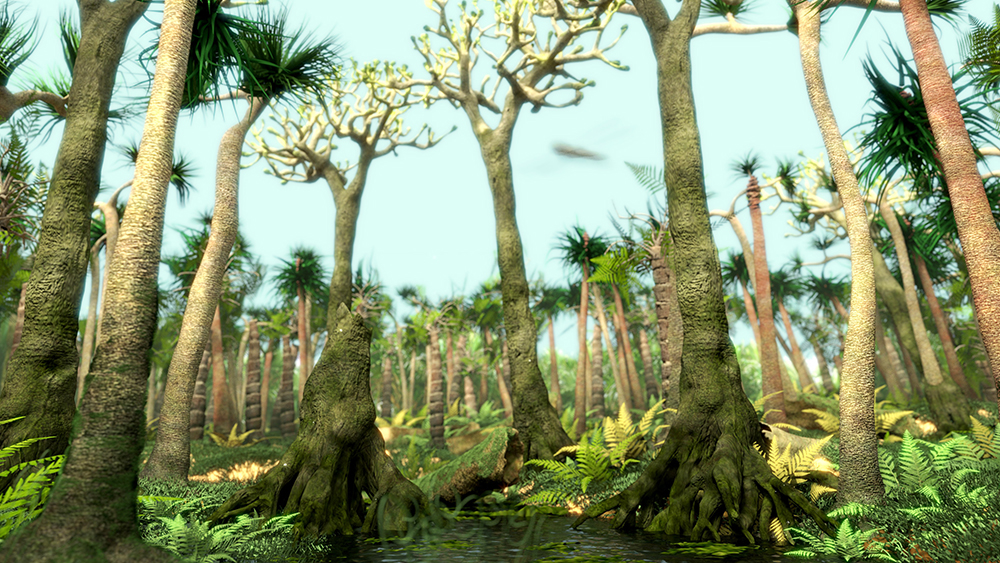According to standard uniformitarian theory, the boundary between the Permian and Triassic Systems is supposed to be marked by the largest extinction event of all time. Evolutionary scientists claim that roughly 90% of ocean species and 70% of land species went extinct suddenly at this boundary.1 This event is known as the P-T or now the Permian-Triassic mass extinction (PTME).1
Jacopo Dal Corso, of the University of Leeds, UK, and colleagues, took another look at the chemistry in the rocks near the boundary. They paid special attention to specific varieties of mercury and carbon changes across the PTME.1 They published their results in Nature Communications.1
The science team developed a computer model to track the cycling of mercury, presumed to be from volcanic activity, and a unique isotope of carbon, which tracks changes in the carbon cycle in the environment. However, they noted that mercury, like carbon, can be stored in terrestrial biomass and soils, and is released through erosion.1 Therefore, the sudden mobilization of both elements can indicate a massive land destruction and oxidation event.1
At the PTME, the scientists found a massive spike in mercury and a sudden shift in carbon. The authors wrote:
We show that the large short-lived Hg [mercury] spike, and nadirs in δ202Hg and δ13C [carbon-13] values at the marine PTME are best explained by a sudden, massive pulse of terrestrial biomass oxidation, while volcanism remains an adequate explanation for the longer-term geochemical changes. Our modelling shows that a massive collapse of terrestrial ecosystems linked to volcanism-driven environmental change triggered significant biogeochemical changes, and cascaded organic matter, nutrients, Hg, and other organically-bound species into the marine system.1
In other words, they concluded that the destruction of land ecosystems occurred prior to the destruction of the ocean system. Further, they attributed these chemical signals to be from mass plant death and soil oxidation—catastrophic events that altered the chemistry of the waters.1
Dal Corso said:
In this study we show that during the Permian-Triassic transition, roughly 252 million years ago, the widespread collapse of the terrestrial ecosystems caused sudden changes in marine chemistry.3
Creation scientists do not accept these great ages nor the notion of extinction events. Extinctions are merely the last occurrences of many organisms in the rock record at the same level.2 Instead, we interpret these events as an expected consequence of the global Flood. As water levels rose higher, new ecological zones would have become progressively inundated, creating many new types of fossils suddenly at the same time globally. And these same fossils would just as suddenly disappear as the water level continued to increase and reached a new ecological zone, creating the illusion of an extinction event.
ICR scientists also realize the so-called Permian-Triassic mass extinction event was part of the Absaroka Megasequence.2 As massive tsunami-like wave-pulses associated with the Absaroka Megasequence crashed across the globe, the edges of the land would have been the first area inundated and destroyed.2 Coastal plants and soils would be affected first, altering the chemistry of the rocks being deposited in the oceans and elsewhere. And this is exactly what we find. Coastal plants and soils were in fact destroyed first. The first major coal seams in the eastern USA—and globally—are found just prior to the Permian in what’s called the Upper Carboniferous (Pennsylvanian System). These coals consist of lycopod trees and wetland plants—flora that live on the coast.
Later, the water level in the Absaroka Megasequence rose even higher, flooding more of the land and burying many amphibians and land animals.2 The Permian-Triassic boundary was a stage in the Flood recording a sudden change in the many plants and animals that were buried as the waters moved from one elevation to the next. Plant and soil destruction were consequences of the judgment described in the book of Genesis. The evidence makes the best sense when the Biblical narrative is acknowledged as truth.
References
1. Dal Corso, J. 2020. Permo-Triassic boundary carbon and mercury cycling linked to terrestrial ecosystem collapse. Nature Communications. DOI: 10.1038/s41467-020-16725-4.
2. Clarey, T. 2020. Carved in Stone. Dallas, TX: Institute for Creation Research.
3. University of Leeds. 2020. New insights into the Great Dying. PhysOrg Published on phys.org June 11, 2020, accessed June 15, 2020.
*Dr. Clarey is Research Associate at the Institute for Creation Research and earned his doctorate in geology from Western Michigan University.



















